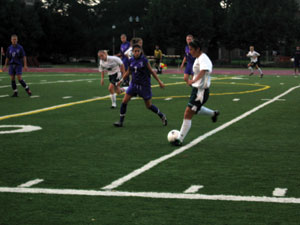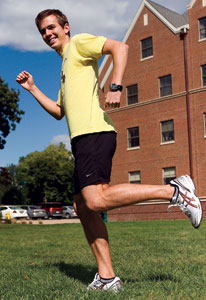This weekend, restaurants, popular bands and exciting exhibits will transform downtown Saint Louis’ Gateway Mall and Kiener Plaza into a vibrant festival for all ages. The second annual U.S. Cellular Taste of St. Louis will feature free concerts, including performances by Ozomatli and The Roots.
Located just one block from the 8th and Pine Metrolink Station, the event, which begins Friday afternoon, Sept. 29, and concludes Sunday night, Oct. 1, is easily accessible to Washington University students.
Food, the main focus of the event, will take center stage on Macy’s Restaurant Row. There, 30 restaurants from the St. Louis area will show off their finest dining selections according to the event’s Web site. The restaurants will provide a diverse array of cuisine, including Greek food, tapas and pizza. Food will, however, be the one part of the event with a price.
The Pinnacle Entertainment Main Stage will play host to the musical entertainment for the weekend. As part of the SoCo Music Experience, Ozomatli and Cowboy Mouth will perform on Saturday night, while The Roots and Son Volt will take the stage on Sunday evening.
Ozomatli, who will perform from 6:30-8 p.m. on Saturday, performed last year at the Taste of St. Louis and at Wash. U.’s W.I.L.D. concert in the Fall of 2004.
Sunday’s main performer, hip-hop and rap group The Roots will play from 6:30-8 p.m. on Sunday. The group released a new album, Game Theory, last month. One of its former members, Rahzel, will play at W.I.L.D. next weekend on campus.
Last year, the Taste of St. Louis made a successful debut, attracting over 120,000 people, according to Shuntae Ryan, public relations director for the event. This year, the Taste of St. Louis is making a few changes.
“We’ve added one additional night and expanded the area to include Kiener Plaza,” said Ryan. “We have also added the AfterTaste parties.”
The Taste of St. Louis spans four blocks between Chestnut and Market Streets, with some parts extending onto neighboring streets. On Friday, the event is open from 4-10:30 p.m., while on Saturday it goes from 11 a.m.-10:30 p.m. and Sunday from 11 a.m.-10 p.m.
The Taste of St. Louis is in no way affiliated with the Taste of Chicago, an annual celebration during the summer.
Sophomore Raymond Colletti attended the Taste of St. Louis last year, and would recommend that fellow students go this year.
“It was accessible because it was free,” said Colletti. “There were people everywhere.”
Another exhibit this year is the ArtDimensions Village. Included in the area will be live art, cultural dances and ice sculpting. The Regional Arts Commission Performing Arts Stage will showcase music from many genres. Performers will include DJ Public and Soorya Dance Company, both of whom will be featured on Saturday and Sunday.
Two other areas will be the My 46 Marketplace, to satisfy shopaholics, and 4 Sho 4 Kids Sports Zone, a non-profit organization run by hip-hop superstar Nelly, which will keep children busy with sports games and inflatables.
Nelly will present an AfterTaste party following the festival on Friday night. Club Dreams, located on Washington Avenue near Saint Louis University, will host the event for a $10 general admission and $50 VIP charge. Tickets will be on sale to the public at the door.
Taste of St.Louis 101
The Basics
Free entertainment
Food from 30 restaurants (with charge)
Dates and Times
Friday
4-10:30p.m.
Saturday
11 a.m.-10:30 p.m.
Sunday
11 a.m.-10:00 p.m.
Performances
Ozomatli
Saturday, 6:30 p.m.
The Roots
Sunday, 6:30 p.m.
 David Leonard
David Leonard David Leonard
David Leonard Matt Rubin
Matt Rubin Matt Rubin
Matt Rubin COURTESY OF JEFF ADER
COURTESY OF JEFF ADER Courtesy of Bruce Lindsey
Courtesy of Bruce Lindsey